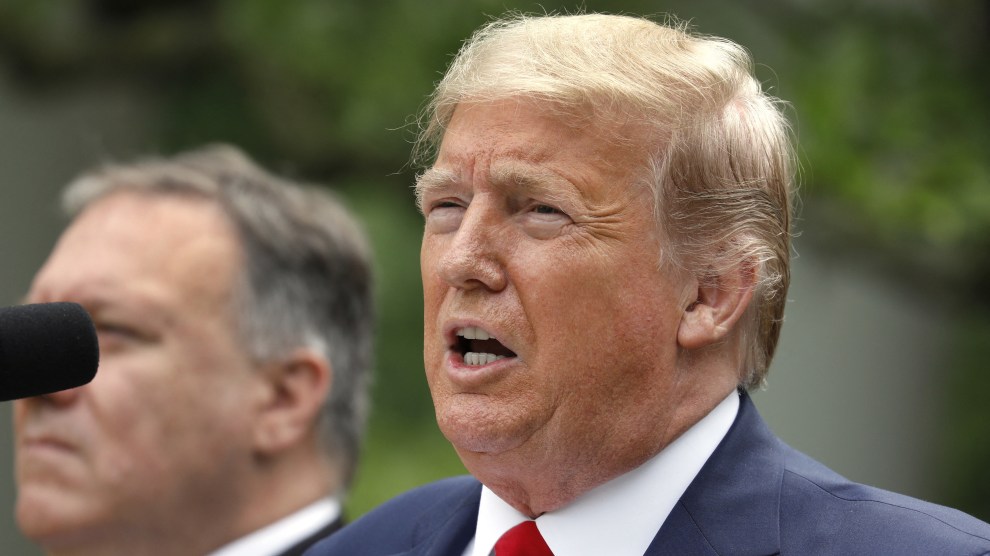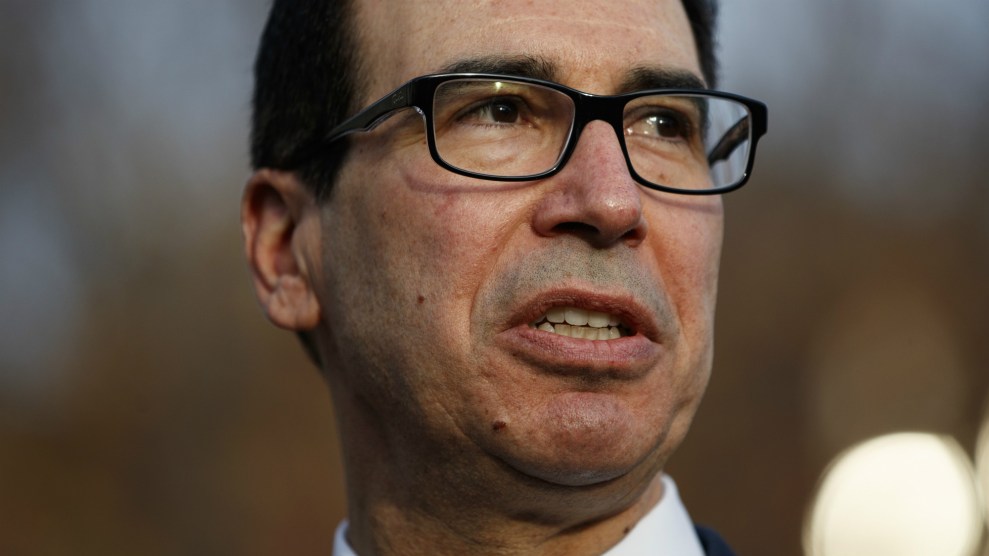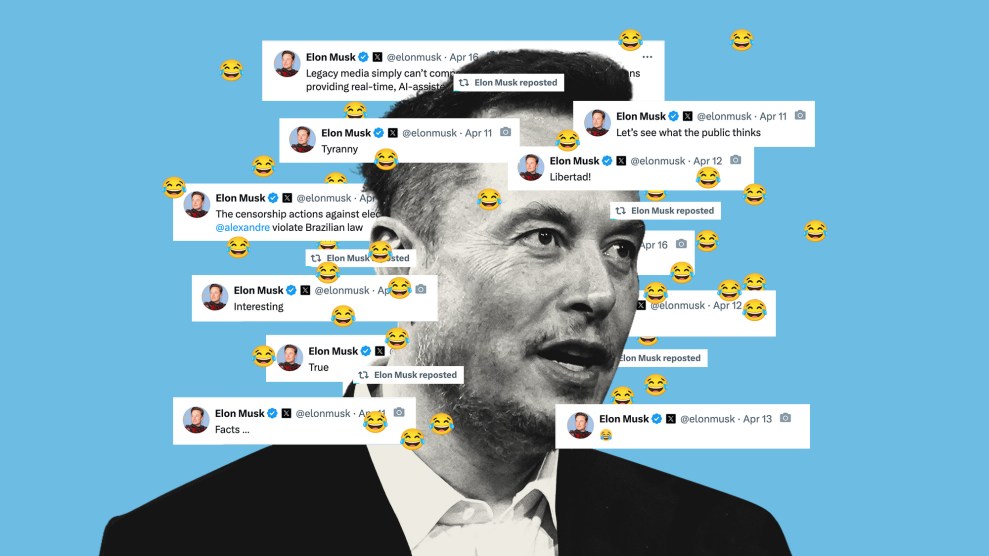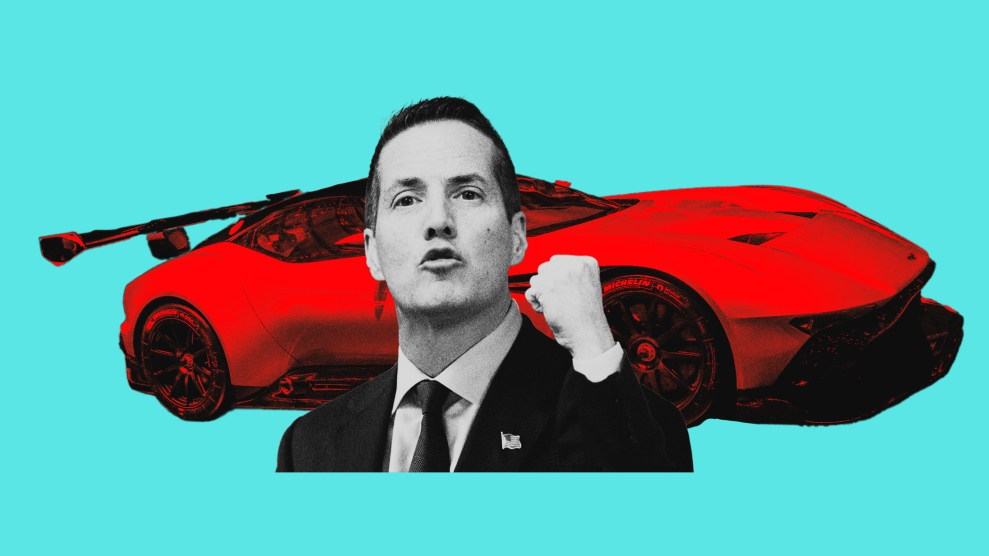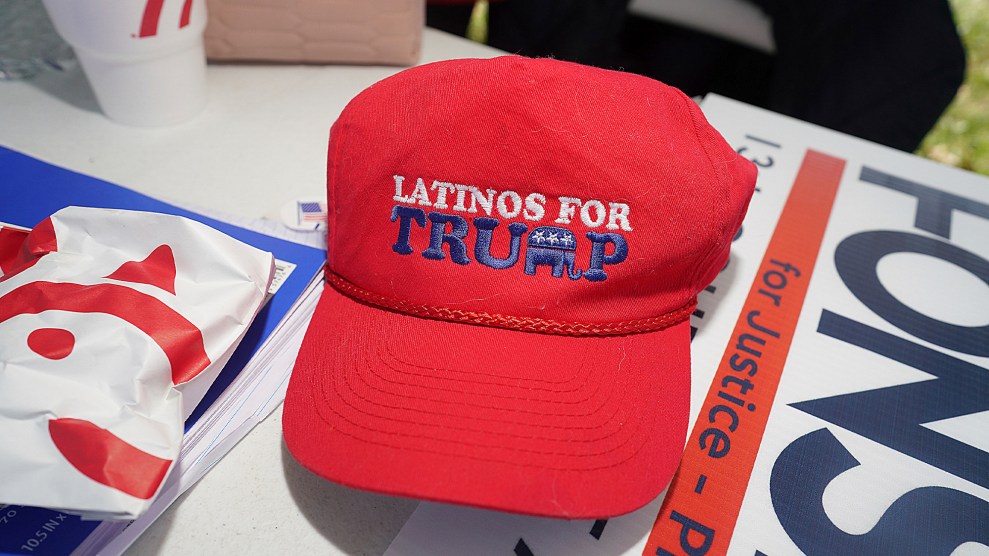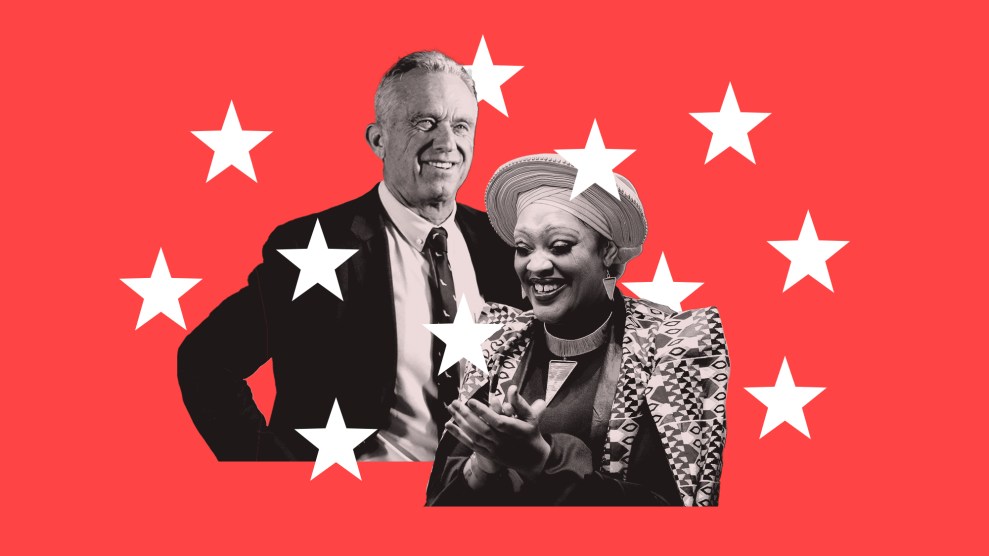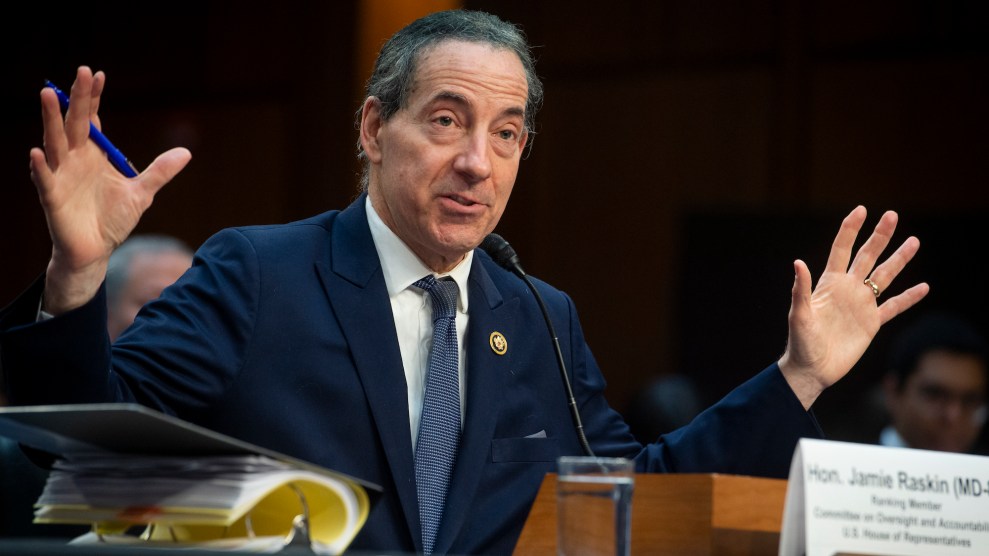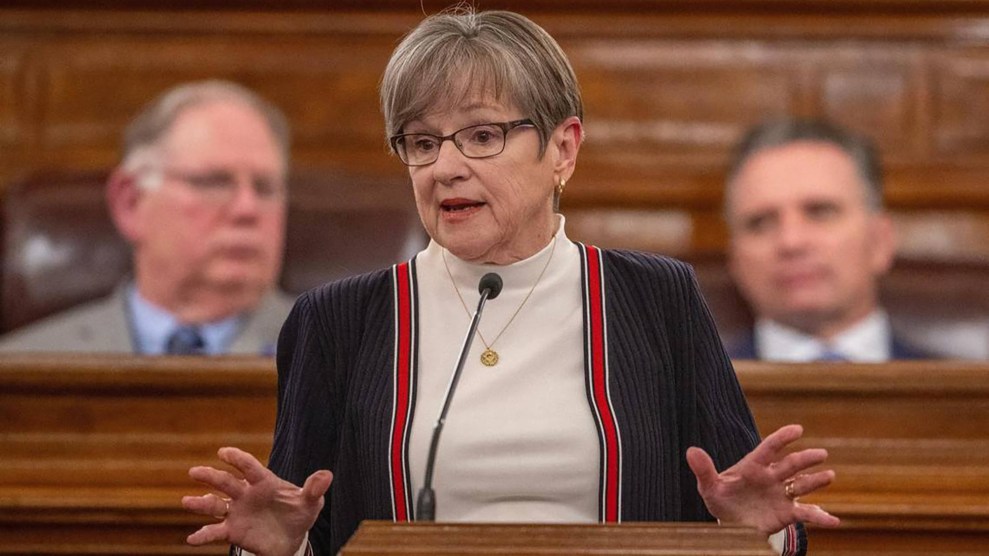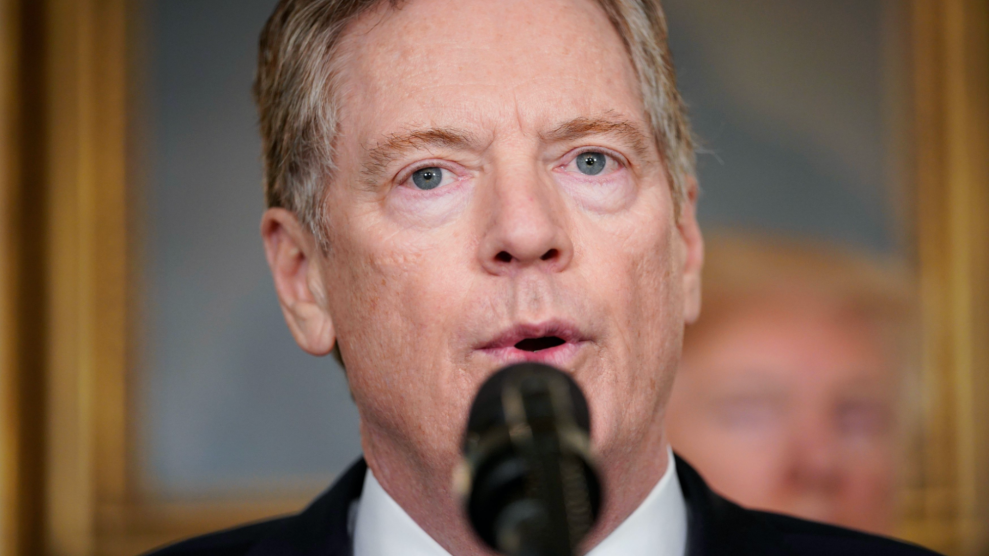
US Trade Representative Robert Lighthizer in March 2018. Lighthizer is leading the strategy behind President Donald Trump’s trade war. Jabin Botsford/Getty
This story was published in partnership with ProPublica, a nonprofit newsroom that investigates abuses of power. Sign up for ProPublica’s Big Story newsletter to receive stories like this one in your inbox as soon as they are published.
On a spring day in 2017, Robert Lighthizer walked through the doors of the office of the United States Trade Representative to introduce himself to the career staff who had shepherded American trade policy for a generation. After a chaotic few months awaiting Lighthizer’s confirmation, officials were eager for stability; Lighthizer offered deep expertise in a cabinet full of government neophytes. As a Washington operative with years of experience in international trade, he seemed like the best appointment they were likely to get under the circumstances.
There was, nonetheless, considerable apprehension among the few hundred USTR staff gathered in the auditorium. President Donald Trump had built his campaign on scathing criticism of the treaties the people in the room had forged over years of hard work. “Free trade can be wonderful if you have smart people,” Trump had said, the very first time he rode down the escalator in Trump Tower to announce his candidacy. “But we have people that are stupid.”
Lighthizer offered a conciliatory tone at that first meeting—acknowledging, one official said, “that he would have a different approach that some of us might disagree with, but that he would be open to hearing our views.’’ Remembered another: “He set out the broad goals of righting the wrongs that had been visited upon us but also tried to be reassuring and respectful of staff capabilities.”
Over the next 3½ years, Lighthizer did listen to the staff he inherited. But this child of the Rust Belt, whose views were honed through years of fighting unfair practices by America’s trading partners, made it clear he shared Trump’s critique of US trade policy in substance, if not tone.
Lighthizer set out on an audacious plan to rebalance American trade relationships around the world, levying sweeping tariffs, hamstringing international institutions, pulling out of agreements and threatening to ditch even more. His boss, a self-styled dealmaker, loved the tactics. Lighthizer delivered what Trump demanded and did it without claiming credit—preserving his post while other White House personnel came and went.
With the election just a few weeks away, it’s worth taking stock of how this signature element of the Trump agenda has worked out. This story is based on interviews with dozens of current and former career staff at USTR, their counterparts in other countries, and interest groups—most of whom spoke on the condition of anonymity to preserve relationships with the Trump administration. Lighthhizer himself declined to be interviewed, as did most of his former top deputies.
The picture that emerges is complex. Even critics of the administration said that Lighthizer had a point when he argued that the gentler tactics of his predecessors had not been effective. And they acknowledge that the once-obscure USTR is more powerful than it’s ever been, its mission reoriented from easing corporate investment barriers overseas to erecting hurdles that might force those companies to keep jobs in America after decades of manufacturing decline.
Along the way, Lighthizer has bent the rules of the international trading system and thrown businesses into turmoil as they race to comply with changes to import costs. He’s ruptured international relationships, maintained tariffs on $350 billion worth of imports, and constructed a series of piecemeal and delicate agreements with trading partners that are as good as the next president’s dedication to enforcing them.
So far, the promised benefits of this upheaval are hard to see. The gap between American imports and exports of goods is as big as it’s ever been, while manufacturing output and job growth flatlined in 2019. To the extent that manufacturers have pulled out of China, they’ve shifted to countries like Vietnam and Mexico, rather than set up factories in the US. And Lighthizer has failed to achieve his most ambitious goals, as a tempestuous president’s abrupt twists and turns sabotaged the patient, insistent approach on which his trade representative had built his reputation.
In their defense, turning the ship of global trade may take more than one four-year term. Lighthizer’s stated goal is to return to a world in which everyone plays by the same rules, without the need for punitive barriers, and it’s possible he could get there with time.
But it doesn’t look likely. Lori Wallach, who runs the Global Trade Watch arm of the liberal watchdog group Public Citizen gives Lighthizer credit for trying to break down the mainstream bipartisan consensus that freer trade is always better. Still, she thinks that Trump’s tactics have undermined his goal of reviving America’s industrial might.
“Lighthizer has changed a lot of thinking in dramatic ways, which is terrific,” Wallach said. At the same time, she acknowledged, “he has not been able to reverse decades of boneheaded, job-killing trade policies, such that we still see a trade deficit today that’s bigger than when Trump took office, and ongoing outsourcing of jobs, despite good efforts to try and turn around a mess.”
The Petitioners Bar
Despite spending his entire career in Washington, for the last few decades, Lighthizer’s skeptical views of trade set him apart from the consensus that saw the North American Free Trade Agreement and other treaties passed with the enthusiastic support of both parties.
A native of Ashtabula, Ohio, on the shores of Lake Erie, he grew up in relative affluence, insulated from the struggles of a region in the throes of a massive steel industry contraction. A product of Catholic schools, Lighthizer headed to college at Georgetown, and stayed there for law school. He then worked at the prestigious firm Covington & Burling until 1978, when Republican Senator Bob Dole of Kansas asked a partner there for any smart conservative lawyers who might join his Finance Committee staff. He became Capitol Hill’s youngest staff director, and positioned himself squarely in the middle of the conservative mainstream, paring budgets and shepherding Ronald Reagan’s massive tax cut package through Congress.
In 1983, he joined Reagan’s White House as deputy trade representative, which required tackling everything from a grain treaty with the Soviet Union to textile imports from China. But he focused in particular on protecting industrial giants, some in his home state, from Japanese competition. Access to the US market, he recognized, was a big enough carrot to extract concessions from trading partners.
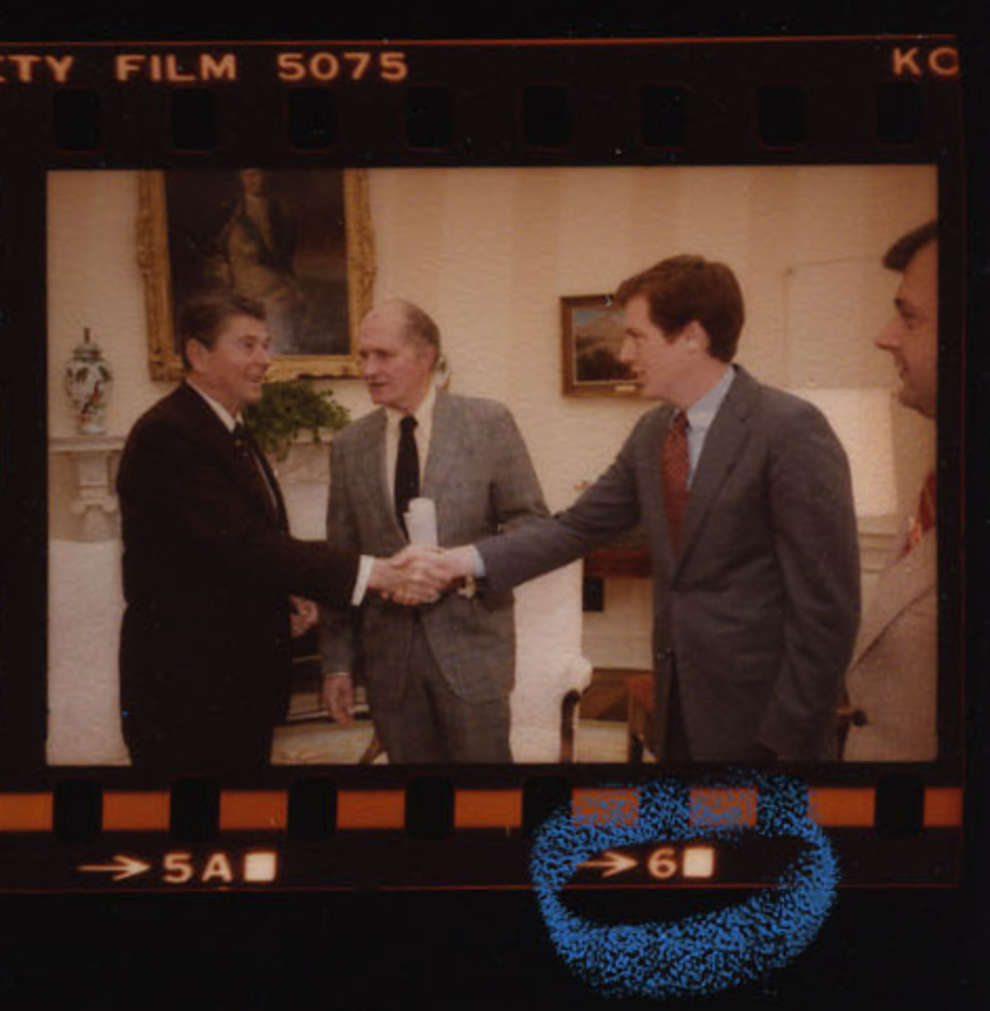
Lighthizer, right, at a 1983 Oval Office meeting with President Ronald Reagan.
Ronald Reagan Presidential Library and Museum
’’I try to be friendly in negotiations,’’ he told the New York Times in 1984. ’’I’m not the theatrical type. The art of persuasion is knowing where the leverage is.’’
Ultimately, import quotas on Japanese steel and cars didn’t save the Rust Belt—Japanese automakers simply set up shop in the union-free American South, while robots thinned the ranks of workers needed on factory floors.
Lighthizer’s divergence from conservative orthodoxy began in the 1990s, when the Republican Party left him, and embraced the orthodoxy that globalization and national specialization were all to the good.
After leaving government, Lighthizer joined Skadden Arps Meagher & Flom, becoming a heavy-hitting tax lobbyist known for his deep expertise and quick wit. As the tax revision wars wound down, he refocused on trade, representing a coalition of American steel companies charging foreign competitors with benefitting from unfair practices like government subsidies. Lighthizer became known as the unofficial king of “the petitioners bar,” lawyers who argued cases before the government entities that enforce trade rules. It was hardly a glamorous field. Moving plants to cheaper locales all over the world was rapidly becoming the default setting for American companies, and plenty of attorneys were making good money helping them do it.
“The message Bob had was not one that the big business groups were supportive of,” said Terry Stewart, a longtime trade lawyer who worked with Lighthizer. “That led to a failure of the mainstream business community and economists and politicians to recognize the challenges that led to the disenfranchisement of blue collar workers.”
Members of the petitioners bar are often true believers, since they’ve been up close and personal with the crippling wage pressure, intellectual property theft and illegal subsidies that left American factories so vulnerable to imports. Lighthizer fought ferociously before the International Trade Commission, once arguing that suffering anything more than a “spiritual injury” at the hands of foreign steelmakers should entitle his clients to protection. (The Commission didn’t buy it.)
Lighthizer became increasingly outspoken after China joined the World Trade Organization in 2001, heralding a steep decline in US manufacturing jobs as companies rushed to the factory boomtowns of Guangzhou and Shenzhen. Testifying before the US-China Commission in 2010, Lighthizer scolded policymakers for “years of passivity and drift” toward China and urged a more aggressive approach. In 2008 and again in 2011, he wrote op-eds making the point that Reagan had been more than willing to throw up trade barriers to defend domestic producers.
For Lighthizer, the issue of the WTO is personal. The multilateral body ruled against the US—and Skadden’s clients—in numerous cases involving subsidy calculations. For the petitioners bar, it made the WTO’s highest appellate court untenable.
“The fact that the Appellate Body had ruled against the US repeatedly was the primary reason Lighthizer was determined to bring down the WTO,” said a former USTR official.
Despite Lighthizer’s tangles with chamber of commerce types, he breezed through Senate confirmation hearings in March 2017 by promising vigorous enforcement of existing trade agreements, drawing praise from both arch free-trader Orrin Hatch and fellow Ohioan Sherrod Brown.
The honeymoon would end quickly.
“It Was Like Someone Had Died”
Created by the Trade Expansion Act of 1962, the USTR has a clear if dated mission: To develop “open and non-discriminatory trading in the free world; and to prevent communist economic penetration.”
The law reflected a broad consensus in favor of expanded trade. From the staunchly conservative Wall Street Journal editorial pages to top Democratic advisers, most believed that the benefits of open markets far outweighed the costs. Those who disagreed were dismissed as xenophobic and unsophisticated. Decades later, Donald Trump blamed NAFTA for a host of ills—from the rise of automation to the decline of unions—and it helped him win traditionally Democratic states like Michigan and Pennsylvania.
To be fair, conventional wisdom had begun to shift under President Barack Obama, as it became increasingly clear even to free-trade advocates that US efforts to prevent China from flouting international rules and norms weren’t working.
Obama spent much of his second term negotiating a trade pact with 12 other Pacific Rim countries, with the idea of creating a US-centered economic bloc to counter China’s influence, and tried to sell it to Congress. The Trans Pacific Partnership marked a rare point of agreement with Republican leadership, but an alliance of labor-oriented progressives and tea party conservatives opposed it. As trade emerged as a potent issue in the 2016 campaign, even the Democratric candidate Hillary Clinton—Obama’s former secretary of state—was forced to turn against it as well.
Trump’s surprise triumph in the election sent shock waves through the trade establishment. The day after the vote, a collection jar appeared on a countertop a Geneva coffee shop, with a sign saying “Save America,” recalled a former USTR employee. “That really was a moment in time when I knew that something was going to be different about this change,” she said.
Obama’s trade representative, Michael Froman, held a pep talk soon after the election, recalled Mark Linscott, the former assistant trade representative for Central and South Asian affairs, who left at the end of 2018. Trump will bring on some good people, Froman said, asking staff to give them a chance. Trump had promised to use tariffs as a cudgel, and Linscott thought that the tool, long out of favor among mainstream economists, might actually break some long-standing logjams.
“It did appear that this administration might be offering new approaches to leverage,” Linscott said.
Many staffers harbored hopes that Trump would put his own stamp on the TPP agreement and move ahead with it. Instead, Trump pulled out of the deal on the first business day of his administration, stunning USTR officials who had devoted years to hammering out its intricately balanced details.
“It was like someone died,” said one former staff member, describing the mood at headquarters on that rainy January Monday.
Negotiations on two other deals—the trade in services agreement and a broad European Union pact—were put on ice. Staff recall a briefing from Stephen Vaughn, a former Lighthizer law firm colleague who came on as acting USTR and then became general counsel, in which he told the legal team that there would be a dramatically scaled back focus on dispute settlement cases before the WTO—a key way in which USTR typically defends its interests.
“People left the room in tears,” remembers a former USTR lawyer. “It felt like a bomb-dropping moment.”
(Speaking for USTR, Deputy US Trade Representative C.J. Mahoney denied this happened. “We have never turned down a case that the professional staff wanted us to file at the WTO,” he said. In response to an inquiry, Vaughn said that was his recollection as well.)
Despite his popularity on Capitol Hill, Lighthizer’s nomination had been held up in the Senate as Democrats bartered on another issue. Commerce Secretary Wilbur Ross managed trade policy in Lighthizer’s absence, along with the virulently anti-China trade advisor Peter Navarro.
Using a national security trade provision, Ross tried to slow China’s steel exports with broad steel and aluminum tariffs. His move antagonized allies like Canada and the European Union, which would make USTR staff’s jobs harder for the rest of Trump’s term.
Soon after confirmation in May, Lighthizer consolidated control and hired three of his Skadden deputies—Jamieson Greer as chief of staff, Jeff Gerrish as his deputy, and Pam Marcus as the deputy chief of staff. The Lighthizer loyalists formed a tight-knit decision making unit.
“Lighthizer and his team came in not as free traders,” said one USTR staff member who served through the transition. “And they intuited, or just knew, that most of the civil service at USTR work there because they believe in free trade. So there was real suspicion of the civil service, that we were not making the kinds of recommendations that Lighthizer would want to hear.”
Mahoney said that Lighthizer values career staff, frequently praising them in building-wide emails when deals are concluded. “The career staff has always been welcome in Bob’s office,” he said.
Nevertheless, in the first year and a half, USTR lost more than 20% of its personnel, with 64 departures and retirements. (Churn continues, but the Office of Personnel Management has not provided updated numbers.) Many who remained felt that Lighthizer represented an old guard, with regressive views of how the economy should work.
He made some efforts to promote women: Three of the six assistant trade representatives he has hired are women. But the organization’s top leadership is all male, and some female staff expressed that he is dismissive toward women, which current USTR chief of staff Kevin Garvey strongly denied.
“There’s a cadre of 75-year-old white men in the trade realm who just want to turn back the hands of time,” said another staffer. “They don’t understand that the world has changed.”
“Like Asking a Vegan to Sell Meat”
To Trump, relationships with other countries usually come down to who’s “winning.” In trade, that usually refers to the trade deficit—that is, America’s exports to a country minus its imports. Like his boss, Lighthizer focused on the goods deficit, since the US imports far more stuff than it exports, which he sees as a problem. That leaves out services, including everything from the many billions in financial expertise the US provides, to tourists and foreign students who attend college here. On that front, the US actually sells more to the rest of the world than it buys.
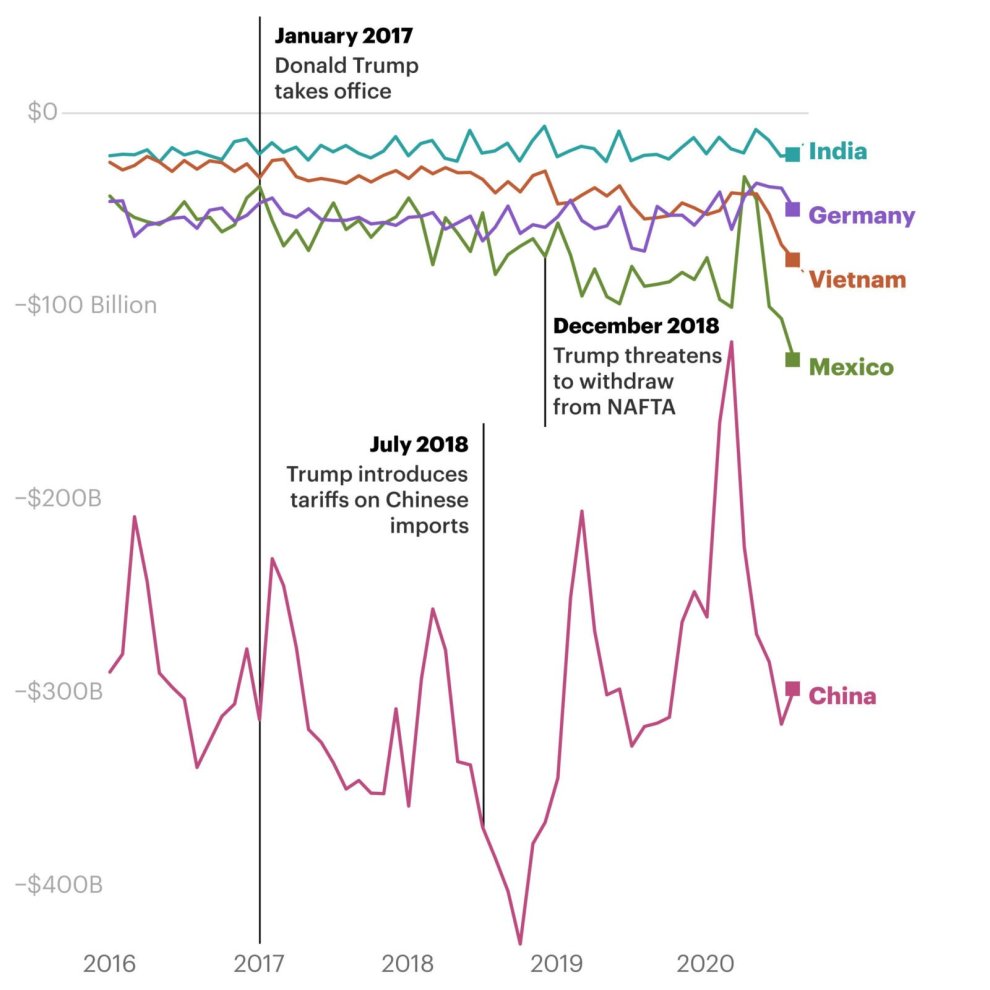
While Americans have been buying less from China, other countries have picked up the slack. (Source: United States Census Bureau)
Moiz Syed/ProPublica
The new administration gave trade negotiators new marching orders: Minimize imports and maximize exports. One former negotiator remembers her conversations with India, with which the US services deficit was smaller than its goods deficit.
“‘What’s going to help shape our relationship is going to be things that you can do to help mitigate the deficit that we have,’” she recalled telling her counterparts, with whom the US has a thorny relationship. “I had to be honest about it. ‘This is what matters to them, so let’s find ways to work together to make a dent in that.’”
For a while, some USTR staff hoped that the zero-sum, economic winners-and-losers approach might solve intractable problems, even though they’d been used to considering the broader implications of trading relationships alongside the scorecard of imports and exports.
“I quickly realized that it wasn’t going to be effective,” said another recently departed official. Relationships between countries are multilayered, this official said, and can involve many kinds of mutual support. “When you see an allyship boiled down to a trade deficit, you know it’s not going to work.”
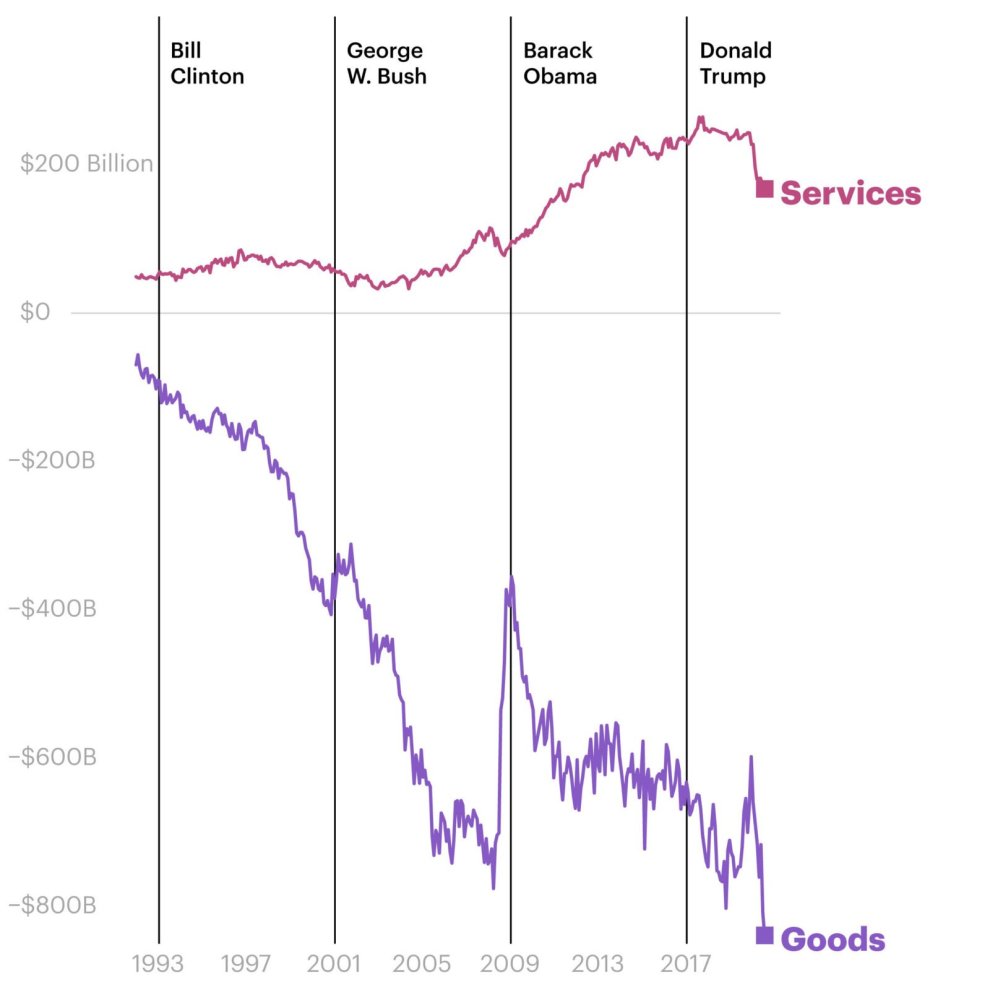
The trade deficit in goods has continued to mount, while the surplus in services has begun to fade. (Source: United States Census Bureau)
Moiz Syed/ProPublica
USTR personnel faced a strange duality: Their agency had more authority than ever, but to do things that they often didn’t agree with.
“It definitely feels like USTR under Lighthizer got its swagger back on some of these things,” said a corporate trade lobbyist, “even though it was a swagger gained by any number of lifelong civil servants who’d spent their careers negotiating trade agreements having to go in and un-negotiate them.”
USTR’s foreign counterparts also felt the whiplash.
“We negotiated TPP with a big brother, and all of a sudden big brother stepped down,” said Salvador Behar, a top TPP negotiator for Mexico. (The pact has since been carried forward by the rest of the parties, leaving the US without the deal’s preferential access to their markets.)
Some of the same USTR negotiators who handled the TPP also worked on the NAFTA update, but singing a different tune. “It’s kind of like asking a vegan person to sell meat,” Behar said. “How come the US, which has been the promoter of free trade, is asking me to close markets and call it free trade?”
For some USTR employees, the work pace slowed. While Froman had wanted detailed briefing materials, Lighthizer only asked for two-page memos. While Froman traveled tirelessly, sleeping on red-eye flights, Lighthizer conducted many negotiations in Washington, while staying at his Georgetown townhouse or commuting to his Palm Beach oceanside condo.
But the staff never knew what to expect. Trump often gave no notice of his tariff pronouncements, blindsiding careful USTR employees. “When you’re getting calls from the private sector asking what’s going on, and you have to somewhat jokingly say, ‘I haven’t checked Twitter,’ That can be a challenge,” said one former staffer.
….I am a Tariff Man. When people or countries come in to raid the great wealth of our Nation, I want them to pay for the privilege of doing so. It will always be the best way to max out our economic power. We are right now taking in $billions in Tariffs. MAKE AMERICA RICH AGAIN
— Donald J. Trump (@realDonaldTrump) December 4, 2018
The uncertainty hurt negotiations. As Trump pursued a deregulatory agenda on everything from financial services to the environment, trade officials trying to uphold parallel regulations in international trade agreements had domestic policy thrown in their faces.
“Our counterparts felt more free to say, ’you’re rolling back things in the US, and we’re supposed to keep raising our standards?’” said one former staffer.
Not having the backing of the higher-ups decreases a trade negotiator’s leverage, explained Wendy Cutler, who worked at USTR for nearly 30 years before leaving in 2015.
“There are times when cabinet officers can’t even give an answer to their counterparts, because the president is personally making so many decisions,” said Cutler, now vice president at the Asia Society. “It affects your ability to solve problems, if your counterpart doesn’t think you can live up to your word.”
One example: In 2018, Mahoney, the deputy trade representative, was negotiating with two important trading partners. A career staffer in the room told ProPublica that in the middle of what Mahoney was handling as a give-and-take conversation, the White House sent orders that no, in fact, the deal on the table was final. Mahoney dutifully conveyed the take-it-or-leave-it message to his foreign counterparts, then hung up the phone, distraught, and asked, “How are these people ever going to believe anything I say ever again?” said the witness, who has since departed the agency.
Mahoney said this account was “not accurate,” and called the call a “constructive negotiation.”
Over time, staff gained respect for Lighthizer’s management of his single most important constituent: the president. While USTR’s profile heightened, Lighthizer largely avoided the limelight, knowing that upstaging his boss could hasten his exit. He also coped with Trump’s more extreme trade impulses, like hiking tariffs without warning and threatening to end various alliances and agreements.
“Bob’s calling card as a negotiator is consistency,” said one longtime steel lawyer who’d worked with Lighthizer since the 1980s. “Here you have a guy whose calling card is consistency working for a guy whose calling card is inconsistency.”
The China Gambit
Lighthizer, 73, could have retired in 2017 with the upwards of $15 million that ethics disclosures show he made over his Washington career. But Trump offered him a shot at a lifelong dream: curing what he saw as America’s unhealthy reliance on China.
Previous trade chiefs had unsuccessfully wrestled with the problem. The world’s second-biggest economy had become a market system that was fundamentally different from the capitalist model upon which most international trade laws and norms are predicated.
The US had hoped China would converge with the free-market mainstream when it joined the World Trade Organization in 2000, setting low tariffs and allowing foreign corporations equal access to its consumers. But the Chinese executed an about-face around the time of the great financial crisis, when capitalist systems neared collapse. Returning to a managed economy, they subsidized exports, required outside companies to enter joint ventures with Chinese ones, and encouraged widespread piracy of intellectual property.
China’s WTO entry should have prevented backsliding, but that required someone to take complaints to the institution’s dispute settlement mechanism. As time passed, smaller countries didn’t want to go up against the regional hegemon and American companies had become too globalized to care, so China was never held to account.
“I’m faulting the whole world for not trying to hold China’s feet to the fire,” said Jennifer Hillman, a former WTO appellate body judge.
In the TPP, the Obama administration negotiated a trade agreement with Pacific Rim nations that would theoretically be so attractive to China, it would meet the pact’s requirements for fair competition so that it could join. Meanwhile, talks continued on long-standing issues like access to the Chinese market for American financial services companies.
“There was a recognition that we had to get tougher on China,” said Jeff Moon, an independent consultant who was USTR’s top China official just before Trump took office. “That was going to happen under Hillary. But the huge difference was, that Trump wants to do it with America alone.”
The Trump administration’s thinking: Assembling a coalition of nations to pressure China would never have worked. “If our standard for doing something is to wait for all the allies to be on board, we’re going to waste a lot of time and suffer a lot in the interim,” Mahoney said.
Instead of picking up where Obama left off, Lighthizer ordered up a report on China’s intellectual property infringement that could be used to justify unilateral tariffs under Section 301 of the 1974 Trade Act, which previous administrations had threatened but never imposed.
“The 301 is a blunt instrument that can be used to achieve what in this instance likely could not have been achieved through the WTO—significant and quick impact,” said Kathleen Claussen, a former USTR lawyer who worked on China’s intellectual property issues.
The strategy kicked off the month before Trump and Lighthizer visited Chinese President Xi Jinping in November 2017.
James Green, then a senior USTR officer in Beijing and one of the few China experts on staff, advised sealing the deal on previously negotiated issues before Trump’s arrival, allowing Xi to claim a domestic victory. The Trump administration wanted China to “feel the pain,” Green said.
“What I tried to argue internally was that the best opportunity we have to get concessions is before a presidential visit,” said Green, now a senior research fellow at Georgetown University. “That was completely dismissed.”
In June 2018, Lighthizer announced tariffs on about $50 billion worth of Chinese exports. China retaliated with steep duties on American agricultural goods. USTR hurled an even bigger tariff volley—and so it went until the end of 2019, when the administration delayed a new round of consumer goods tariffs set to go into effect right before Christmas.
Farmers, an important Trump political constituency, were compensated for the lost Chinese market with tens of billions of dollars in subsidies—more than the auto companies received during the last recession—and no obligation to repay them. But manufacturers, faced with higher prices for imported parts, got nothing. That helped drive the sector into a recession—a December 2019 study estimated that the tariffs depressed manufacturing employment in sectors on which they fell most heavily.
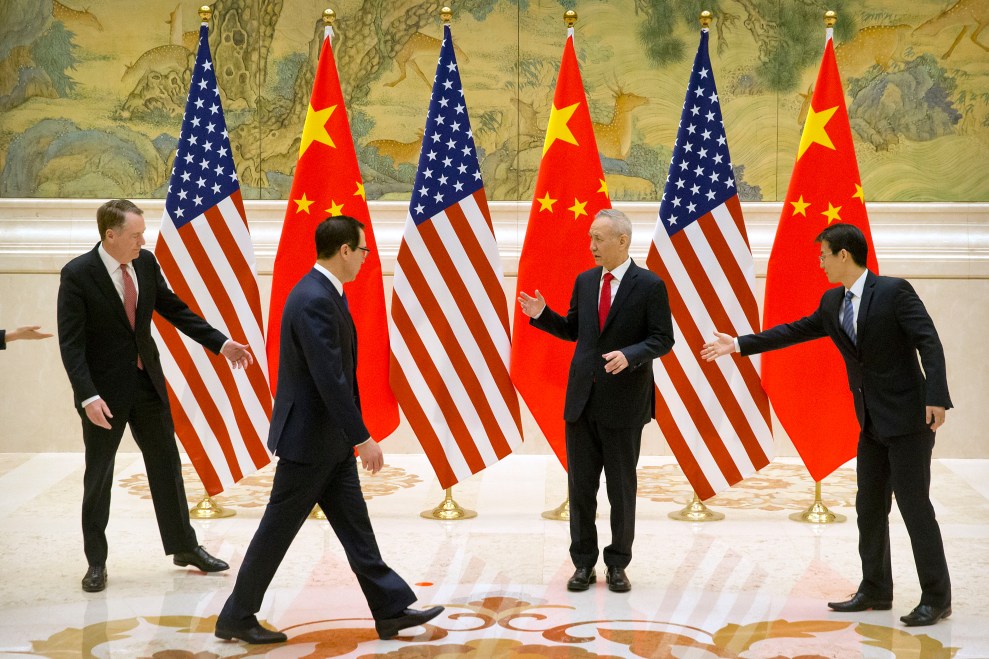
From left, Lighthizer, Treasury Secretary Steven Mnuchin, and Chinese Vice Premier and lead trade negotiator Liu He at an opening session of trade talks in Beijing in February 2019.
Mark Schiefelbein/Getty
Meanwhile, talks proceeded. In January, China agreed to respect intellectual property, open its market to agricultural goods, and license American financial services providers, while committing to purchase $200 billion worth of US goods. Although China had been pledging some of those commitments for years, Mahoney argued that the deal wouldn’t have happened without applying tariffs.
“There were 10 rounds of negotiations with the Chinese on these issues before this administration,” he said. “The strategy of talking to these people had been tried across two administrations and basically led to nothing.”
Companies were relieved that the “Phase 1 Agreement” might herald a cessation of hostilities. But only 19% of companies surveyed by the American Chamber of Commerce in China thought the deal was worth years of tariff-driven disruption.
The pain has continued on both sides. Agricultural exports to China started rebounding in 2020, but are nowhere near their pre-trade war highs, as China has fallen short of its purchase commitments. Neither side dropped its tariffs significantly, while introducing complicated exemption processes. The tougher issues, regarding the tight control China’s government exerts over its economy, were deferred to a second phase of talks.
Derek Scissors, a China scholar at the conservative American Enterprise Institute, advised Lighthizer, Treasury Secretary Steven Mnuchin, and the rest of Trump’s economic team to use financial sanctions and bans on specific bad actors—state-owned enterprises and those that violate intellectual property protections—to attack China’s practices directly. That would work better than bargaining for specific concessions like requiring China to buy large amounts of soybeans.
“I think that’s his view,” Scissors said of Lighthizer. “It’s not the president’s view. So he’s got to negotiate with the Chinese, he’s got to negotiate with the president, and to add to all that, he’s got Steve Mnuchin going ‘everything’s fine, settled, sign here, deal’s done.’”
In July, as Trump sought to refocus blame for the coronavirus on China, he acknowledged that a Phase 2 deal was unlikely.
Now, by Lighthizer’s own metrics, the US isn’t winning the trade war. The trade deficit with China has barely budged, and it’s widened with other countries like Vietnam as American companies responded to tariffs by moving operations elsewhere in the region.
Another factor undermining Lighthizer’s approach is currency markets, which Treasury influences, not USTR. Asian countries have been holding their currencies artificially low relative to the dollar, which makes the goods the US tries to sell overseas more expensive and decreases the potency of tariffs.
In September, a WTO panel ruled that the tariffs imposed under the 1974 Trade Act were illegal. Because Lighthizer’s efforts to hobble the WTO included blocking the appointment of new judges, the high court that could overturn the decision on appeal no longer functions. The ruling stands, which would mean the WTO could authorize China to retaliate. China had already done so without authorization, another sign that the once-strict rules of international trade are being supplanted by a free-for-all in which each country does what it wants.
Business Flummoxed
Lighthizer brought another abrupt change to USTR: Making it clear that American business wasn’t his only client.
The divergence came to a head quickly, during the overhaul of NAFTA, which Lighthizer conducted at warp speed for a trade agreement. In order to win over Democrats, he’d proposed getting rid of investor-state dispute settlement, which allows companies to sue governments in special courts over laws they perceive as discriminatory.
That and other issues had outraged trade groups, which complained that they needed a provision for settling disputes to protect their overseas investments from abroad. In early October 2017, heading into the fourth round of negotiations, National Association of Manufacturers vice president for government affairs Linda Dempsey requested an “urgent” meeting to discuss “increasing concerns throughout all the major US economic sectors,” according to emails obtained under the Freedom of Information Act by the watchdog group American Oversight.
USTR’s chief of staff Jamieson Greer declined, suggesting that companies engage through already-scheduled staff briefings and the Industrial Trade Advisory Committees, a formal channel for stakeholders to weigh in on trade policies. (Under Lighthizer, some committee members say, that input has been ignored.)
At the conclusion of that round of talks, Lighthizer held a press conference at the stately white Winder Building, in a conference room packed with reporters. One asked about the business groups’ objections, prompting an exasperated reply. Corporations purport to love free markets, Lighthizer snapped, waving his arms for emphasis. But instead of incorporating political risk into their international business decisions, now they want trade rules to protect them from anything that might go wrong?
“Why is it a good policy of the US government to encourage investment in Mexico?” Lighthizer asked. In the end, he got what he wanted; the dispute settlement provision was mostly scrapped.
NAFTA wasn’t the only matter on which business lobbies felt they had lost control. An ad hoc business group coalition held sometimes daily conference calls around Trump edicts, including his tweeted order that all US companies move supply chains out of China. The coalition prepared a lawsuit should Trump actually invoke the 1977 law on which it was ostensibly based.
Trump didn’t follow through. But the larger problem for businesses was that, even when USTR did want to act on their behalf, it didn’t always ask their opinion. In the China negotiations, for example, nobody lobbied for specific purchase targets, which became the deal’s largest selling point.
Although they’re not usually cast as such, tariffs aren’t so much a weapon against other countries as they are a signal to domestic business: Lighthizer was telling American companies that investing overseas wouldn’t be the obvious choice it had been in the past.
“If that’s your goal, I think that tariffs have worked their magic,” said James Green, the former USTR staff member in Beijing. “He’s made corporate America think about whether they want to invest their next dollar in China.”
The biggest beneficiary of USTR’s actions so far, on the other hand, may be tech companies: Google, Amazon and Facebook have hired at least a dozen USTR staffers since early in the administration, including high-level intellectual property specialists, and secured broad legal immunity concerning third-party content posted on internet platforms. Lighthizer’s calendar shows 15 phone calls and meetings with Apple CEO Tim Cook in 2018 and 2019, more than any other corporate executive, as the iPhone maker lobbied for tariff exemptions. Some meetings were scheduled on less than a day’s notice, correspondence shows.
On NAFTA, Lighthizer’s willingness to tell business groups to pound sand was made possible by his skillful navigation of Congress, which has to sign off on comprehensive trade deals. The kumbaya moment, however, hasn’t extended to the rest of Trump’s narrower bilateral agreements, for which Lighthizer skipped lawmakers entirely.
“We need to be able to have Congress being full participants if we’re going to make meaningful progress,” said Rep. Earl Blumenauer, an Oregon Democrat who chairs the House Ways and Means trade subcommittee, voicing irritation about the mini-deals and tariff measures for which Lighthizer hasn’t sought congressional approval.
Yet for all their grumbling, lawmakers have balked at reining in Trump’s authority. The Senate Finance Committee has floated legislation that would constrain using national security to justify tariffs, but the bill hasn’t moved forward—in part because lawmakers recognize that Trump likely wouldn’t sign it.
Of course, Lighthizer knows that.
“With a lot of what he’s done, there’s a pretty brutally practical calculus,” said a House aide on trade. “If I don’t exactly jump through these hoops, is the US Congress going to stand up and prevent us from doing this?”
A Fight to the Finish
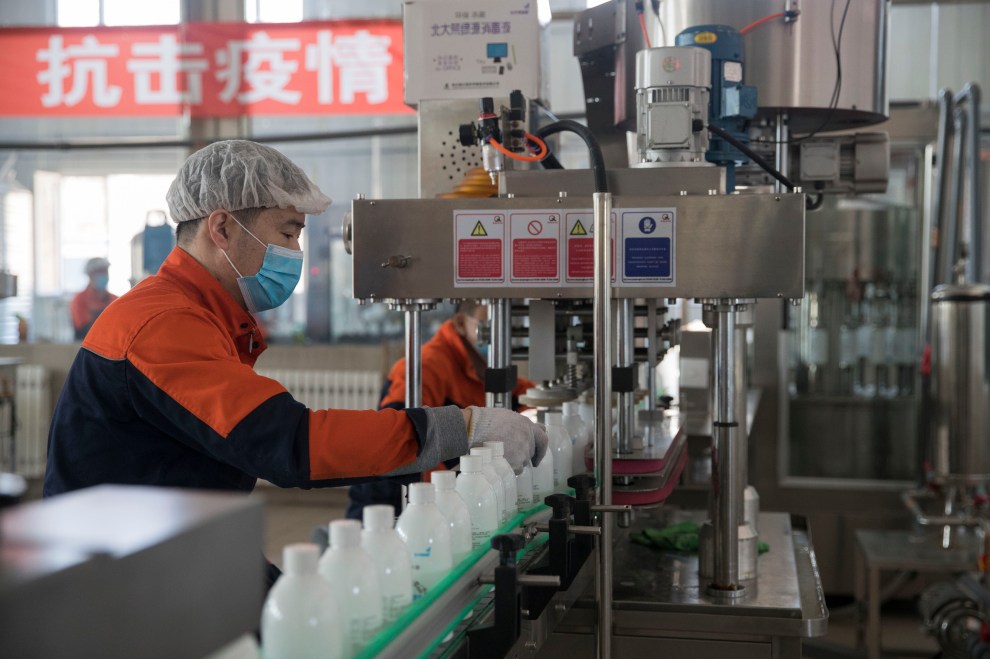
Hand sanitizer on a production line in Harbin, China.
Zhang Tao/Getty
The pandemic thwarted some of Lighthizer’s plans for 2020, but he hasn’t stopped fighting for higher tariffs.
In early March, it became apparent that many China-made supplies and equipment needed to control and treat infections were subject to tariffs, giving rise to attacks on protectionism as a public health threat. USTR exempted some of those goods, but Lighthizer has since opposed broader relief for medical products. At a June Senate Finance Committee hearing, he said he would consider pulling out of a pharmaceutical agreement that committed the US to zero tariffs.
“I would be far more in favor of increasing tariffs on the things that we need as a part of an overall plan to make sure that the next time we have domestic manufacturing capability in these areas,” Lighthizer said.
Lighthizer also announced that he would pursue a broad WTO tariff “reset.” Over many years of negotiation, WTO members have varying maximum tariff rates, with less-developed nations usually imposing higher duties to protect growing industries. The average US tariff is among the lowest in the world, and the plan proposes raising the US tariff ceiling much higher, giving USTR negotiators more leverage as they ask other countries to lower their barriers. If they refuse, as expected, the Trump administration could then jack up America’s tariffs to match the world’s most protectionist countries.
The reset proposal sent ripples of alarm through Geneva and trade-war-weary Washington. “The business community’s concern is that an effort to reset tariffs risks ending up with higher tariffs everywhere,” said John Murphy, US Chamber of Commerce vice president for international policy.
Meanwhile, Lighthizer’s agency has started to destabilize. Stephen Vaughn, who was seen as a steadying influence, returned to his law firm last year. He had Lighthizer’s trust and was seen as a conduit to the front office, making career staffers believe their advice was at least presented, if not heeded.
Lighthizer’s original Skadden team returned to private practice earlier this year. In July, Lighthizer faced a staff revolt as he attempted to bring employees working at home during the pandemic back to the office. (Mahoney said this was optional.) Lighthizer then ordered that vacancies could no longer be filled from outside the agency, which Mahoney attributed to difficulties in interviewing candidates during the pandemic, and a rethinking of staffing levels.
If Joe Biden succeeds Trump, most experts expect a return to a less confrontational trade policy. But they recognize that Lighthizer’s legacy can’t be unwound quickly or neatly.
“I think Biden would come into office with a bank of goodwill,” said Sam duPont, who worked at the agency’s digital trade office until joining the German Marshall Fund earlier this year. “But the trade relationship with Europe, for example, is really strained. And a lot of things have been put in place that would have to be undone for that good will to be maintained.”
Craig Allen, president of the US China Business Council, served as Obama’s ambassador to Brunei, a founding member of the TPP back in 2003. He keeps a framed replica of its Treaty of Peace, Friendship, Commerce and Navigation—a document that dates back to 1850—in his office near Washington’s Dupont Circle.
He remembered having to tell his diplomatic counterparts that the US was withdrawing from the TPP, and worries that the relationship will never fully heal.
“It was painful, that we withdrew with nothing so much as a ’thank you very much.” Allen continued. “All of our negotiating partners worked hard to meet our demands. It was very difficult for them to do so, and we walk away. But we are a democracy, and an ambassador must follow instructions.”
